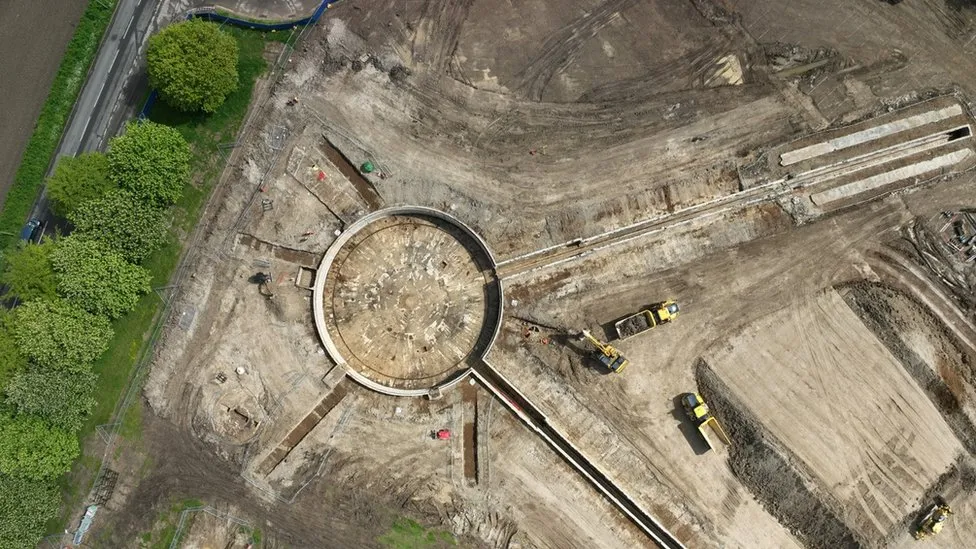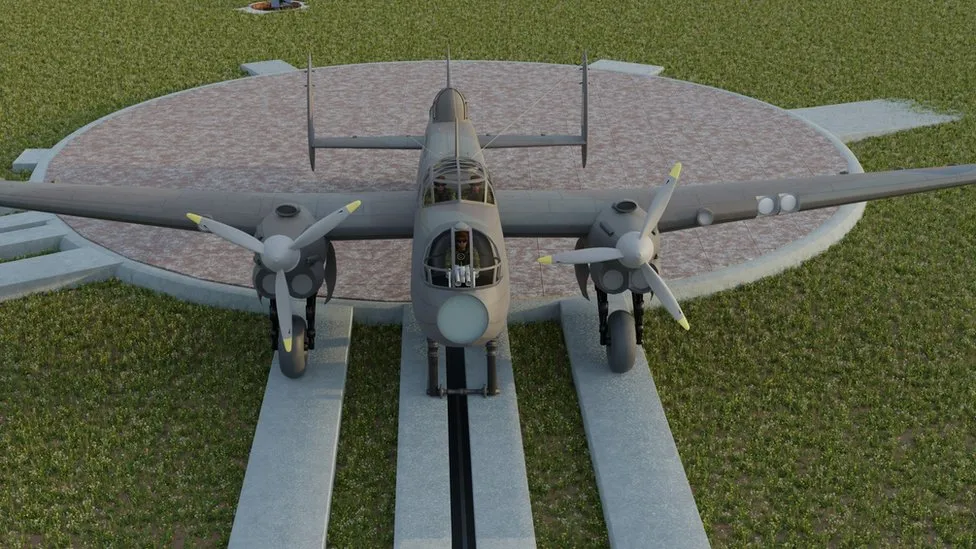An experimental catapult designed to launch World War Two bomber planes into the sky has been excavated.
The prototype Royal Aircraft Establishment Mark III Catapult was unearthed at the site of a development at the Harwell Science and Innovation Campus in Oxfordshire.
It was made to enable take-offs using shorter runways and so the planes could be loaded with more fuel.
The contraption was built between 1938 and 1940 when the site was RAF Harwell.
However, the project was abandoned without ever launching an aircraft, because the engines would wear out and the design did not properly fit the bomber planes.
The mechanism was taken out and a normal runway built over the top.
The technology was a precursor to Catapult Armed Merchant (CAM) ships, which launched Hawker Hurricanes at sea via rocket-propelled catapults.
How was the catapult meant to work?
- A large rotating turntable directed aircraft towards one of two concrete track runways only 82m (269ft) long
- The aircraft was attached to an underground pneumatic ram using a towing hook
- Underneath the turntable Rolls-Royce Kestrel aero engines compressed air to 2,000 psi to drive the ram
- High-pressured air was forced into the pneumatic ram, which rapidly expanded to the length of the guided track
- The bomber would then be catapulted into the sky


